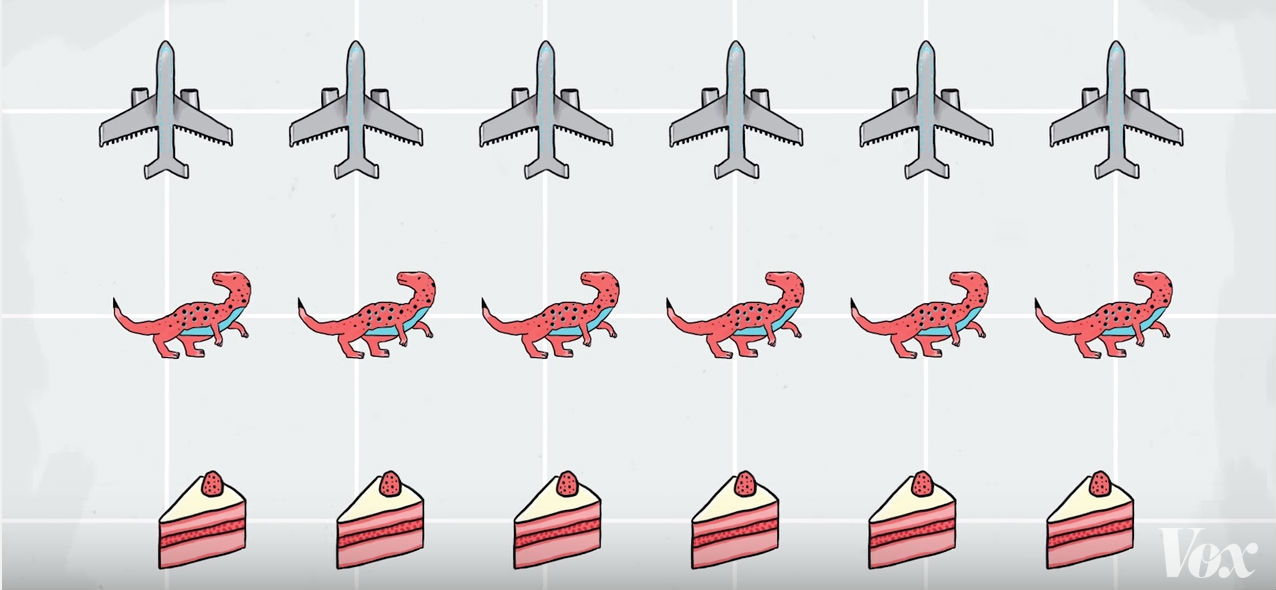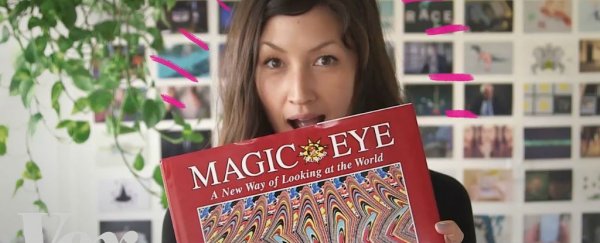If you're like us, Magic Eye puzzles were a particularly formative part of your childhood in the 1990s, because seeing a hidden message that your parents couldn't was a super easy way to make yourself feel superior and awesome. But how exactly did they work, and why can't everyone see them?
As the Vox video above explains, Magic Eye puzzles are stereograms - two-dimensional pictures that can create three-dimensional images, depending on how you look at them.
Some stereograms are designed to be viewed cross-eyed, but the ones published in the famous Magic Eye books were designed for divergent viewing. That means instead of looking directly at an image, you're supposed to 'over diverge' your eyes, as if you're looking right through it.
To achieve this, you need to point your eyes at a spot beyond the main image. Some people will just naturally be able to do this without even realising what their eyes are doing, while others will need to use the guides at the top of the page, indicating where they should look.
If you're successful, a three-dimensional image should appear in the patterned stereogram. Try it:
Despite the fact the Magic Eye puzzles were all the rage in the '90s (of course we had them Blu-Tacked to our bedroom walls), the idea had been around for a decades before then.
They were developed as part of an investigation into human perception - specifically, the mechanisms involved in taking the two separate images created by your two eyes, and combining them into one.
As the video explains, pupils in human eyes are typically around 66 millimetres apart, which means each eye gets a slightly different picture of whatever they're focussing on. It's your brain's job to immediately process these and combine them into two, so you don't walk around with constant double vision.
Interestingly, it's the differences in the two original pictures that help your brain achieve the best approximation of what you're looking at - those differences add depth to the resulting image you perceive.
This is known as stereopsis - or 3D vision - and scientists have been studying it for almost two centuries.
At first, researchers thought you'd have to overlap two separate images to create this effect - in fact, 3D glasses and VR headsets still use this technique - but what's so cool about Magic Eye puzzles is they can achieve the same effect using a single image.
They do this by repeating the same image within the same picture, and it can work with something as simple as this:

When you do your special Magic Eye trick, do the planes appear to be the furthest back, the cakes up close, and the dinosaurs in the middle? Oh and did you notice that you're suddenly seeing seven of each object instead of six? Crazy, right?
The science behind why this works is pretty complicated, so I'll let the guys from Vox explain that to you in the video above.
But rest assured: everyone with two regularly functioning eyes is perfectly capable of seeing a Magic Eye image - some people just need more guides and practice to get them there.
Here's one more for the road:
Just awesome.
